 |
 |
|
1970s Exploitation special
By Tom Mes
Mirroring developments in film industries elsewhere in the world, Japanese cinema drastically upped the sex and violence quotient during the 1970s. Locked in a battle for audience attention with the almighty television, the studio system suffered its first casualty early on when Shintoho went bankrupt in 1961. The industry continued to lose ground over the decade that followed, technical innovations like Cinemascope and colour film proving ineffective in throwing anything more than a temporary hurdle in the path of the small screen menace.
And so a new weapon was unveiled, a fearsome and explosive cocktail of salacious ingredients: blood, breasts and bullets, sex, shocks and savagery. All the things TV, with its direct access into people's homes, could never risk supplying for fear of upsetting viewers and advertisers.
For a period of seven years, the Japanese film industry pulled out all the stops with a bombardment of sensational imagery. That despite these efforts it lost the battle even before the 80s dawned matters little today. It left us with topless girl gangs, slaughtering samurai, vengeful maidens, scowling gangsters and nasty nuns. Filled with colourful sex and lurid violence, audacious formal experiments and anti-authoritarian provocation, it was a mindbending orgy in which grindhouse met arthouse, and which is still winning Japanese cinema new fans every day.
In praise of one the most exciting periods in Japanese film history, here follows a tiny selection from the rich pickings of 1970s exploitation cinema.
Battles Without Honour and Humanity 2
Female Convict Scorpion: Beast Stable
Lady Snowblood: Love Song of Vengeance
The Most Dangerous Game
The Razor: Sword of Justice
Zero Woman: Red Handcuffs
|
 |
Battles Without Honour and Humanity 2: Deadly Fight in Hiroshima
Original Title: Jingi Naki Tatakai: Hiroshima Shito-Hen
Director: Kinji FUKASAKU
Cast: Kinya KITAOJI, Meiko KAJI, Sonny CHIBA, Bunta SUGAWARA, Asao KOIKE
Running time: 100 mins.
Year: 1973
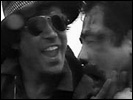 In what is perhaps the most unpretentious entry in the Battles series, Fukasaku and scriptwriter Kazuo Kasahara move the Shozo Hirono protagonist of the first film to the background and focus on a love story between a low-ranking gang member (Kitaoji) and the niece of one of his superiors (Kaji). This being a Fukasaku film, it's almost unnecessary to add that this love story is a doomed one. In what is perhaps the most unpretentious entry in the Battles series, Fukasaku and scriptwriter Kazuo Kasahara move the Shozo Hirono protagonist of the first film to the background and focus on a love story between a low-ranking gang member (Kitaoji) and the niece of one of his superiors (Kaji). This being a Fukasaku film, it's almost unnecessary to add that this love story is a doomed one.
Love story it may well be, Deadly Fight in Hiroshima is appropriately titled. Occasionally playing like a prototype for the later Graveyard of Honour (1975), the rage comes in equal doses whether it's love or turf that the characters fight for. Nevertheless, the film stands largely apart from the continuity of the series (though Sugawara appears in a bit part as Hirono, now scraping together a living at the docks as the head of his own tiny gang). As very much a self-contained work it will probably appeal more to those who are not as taken with the labyrinthine plotting of the other entries, also thanks to Sonny Chiba's scene-stealing performance as the arrogant, loose-cannon son of a gang leader.
Fukasaku would get back to matters at hand with episode three, Proxy War, whose Shakespearean machinations form an allegory for the world political scene of the Vietnam-era Cold War.
|
 |
Female Convict Scorpion: Beast Stable
Original Title: Joshu Sasori: Kemonobeya
Director: Shunya ITO
Cast: Meiko KAJI, Mikio NARITA, Nobuo YANA, Yayoi WATANABE, Tomoko MAYAMA
Running time: 87 mins.
Year: 1973
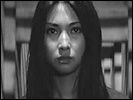 Third entry in the deservedly much loved Female Convict Scorpion series, this was made when Meiko Kaji was hitting her peak. The same year she made the first Lady Snowblood and appeared in the sequel to Fukasaku's Battles without Honour and Humanity (see above). Third entry in the deservedly much loved Female Convict Scorpion series, this was made when Meiko Kaji was hitting her peak. The same year she made the first Lady Snowblood and appeared in the sequel to Fukasaku's Battles without Honour and Humanity (see above).
Though it has so far been shorn of a release outside Japan, Beast Stable is a worthy successor to Female Convict 701 and Jailhouse 41, albeit one with a rather different style and tone. The film spends little time in prison, predominantly documenting Sasori's plight as a fugitive in the city, trying to lay low and make a living. Sheltered by prostitute Yuki and her retarded brother, who are engaged in an incestuous relationship, Sasori finds a job as a seamstress. A small time gangster recognises her and has her kidnapped. She wakes up locked in a cage full of crows at the mercy of a group of hoodlums headed by one of Sasori's former fellow inmates.
Beginning with Kaji running through the streets of Tokyo with a disembodied arm dangling from the handcuffs around her wrist, Beast Stable progresses through its plot of escape, evasion and recapture in a series of magnificently bewildering set pieces. Sequences like her imprisonment in the cage of crows and her flight into the sewer system are of a kind of urban-surreal beauty reminiscent more of Luis Bunuel's work of the period than of the two previous entries in the Scorpion series. The curtain of tiny flames that descends into the sewer whenever Yuki seeks contact with Sasori is a riveting sight, emblematic of Shunya Ito's mastery of every element placed within the frame. Beyond its plastic beauty, Beast Stable also retains the critical stance of its predecessors (there are references to the medical experimentations conducted by the Japanese forces in Manchuria during World War II).
Kaji returned to the role of Sasori for a fourth time in Female Convict Scorpion: Grudge Song (Joshu Sasori: Uramibushi, directed by Yasuharu Hasebe), before handing her prison rags to Yumi Takigawa for the fifth outing, New Female Convict Scorpion #701 (Shin Joshu Sasori 701-Go, dir: Yutaka Kohira, 1976).
|
 |
Lady Snowblood: Love Song of Vengeance
Original Title: Shurayukihime: Urami Renga
Director: Toshiya FUJITA
Cast: Meiko KAJI, Yoshio HARADA, Juzo ITAMI. KazukoYOSHIYUKI
Running time: 89 mins.
Year: 1974
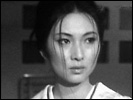 The first Lady Snowblood (featured in this column several months ago) remains one of the landmarks of the 1970s and is being seen by more people outside Japan than ever as a result of Kill Bill (at least, let's hope so). This sequel is less a landmark than a blip on the radar, however, due mostly to the fact that the first film was such a perfectly self-contained piece. There was simply no motivation, character-wise, to warrant a follow-up. The first Lady Snowblood (featured in this column several months ago) remains one of the landmarks of the 1970s and is being seen by more people outside Japan than ever as a result of Kill Bill (at least, let's hope so). This sequel is less a landmark than a blip on the radar, however, due mostly to the fact that the first film was such a perfectly self-contained piece. There was simply no motivation, character-wise, to warrant a follow-up.
Though never stooping to any real lows, the film glides along pleasantly at best and unremarkably at worst as Yuki is first sent to and then freed from jail, and hired to assassinate an anarchist who turns out to not be such a bad chap after all. The motivation problem is abundantly clear from the diminished charisma of the protagonist. Without her mother's mission of revenge to guide her, Yuki becomes a stock character. In short, she's nowhere near as cool as she was in the original.
Love Song of Vengeance is by no means entirely by the numbers. It inverses the traditional roles of action cinema, with a woman wielding the weapons and the man serving as the love interest. There's some quite vivid employment of the Meiji-era historical background and Kaji and Harada are two actors who can shine under even the worst circumstances. There's enjoyment to be had, but held up against its mighty predecessor, it just doesn't add up to all that much.
|
 |
The Most Dangerous Game
Original Title: Mottomo Kiken Na Yugi
Director: Toru MURAKAWA
Cast: Yusaku MATSUDA, Keiko TASAKA, Ichiro ARAKI, Asao UCHIDA
Running time: 89 mins.
Year: 1978
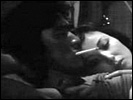 Although he qualifies as the heir to such leading men as Ken Takakura and Bunta Sugawara, bringing along a distinctly contemporary edge that was all his own, Yusaku Matsuda had the misfortune of arriving too late to work with the same kind of material and talent as his illustrious predecessors. Matsuda shot to fame at the tail end of the 70s, just after the exploitation film had gasped its last breath. Quite tellingly, his fame was thanks largely to his work in television. Although he qualifies as the heir to such leading men as Ken Takakura and Bunta Sugawara, bringing along a distinctly contemporary edge that was all his own, Yusaku Matsuda had the misfortune of arriving too late to work with the same kind of material and talent as his illustrious predecessors. Matsuda shot to fame at the tail end of the 70s, just after the exploitation film had gasped its last breath. Quite tellingly, his fame was thanks largely to his work in television.
A look at the films from the height of his popularity as an action star tells why the glory days of the seventies had ended. Scripts, directors and budgets were of a markedly lower level than four or five years earlier. The Most Dangerous Game is one of Matsuda's more successful and famous films, but director Toru Murakawa is neither a stylist like Kenji Misumi, Yukio Noda or Shunya Ito, nor a realist like Kinji Fukasaku or Eiichi Kudo. In fact, there's little in the way of any kind of style in his visual approach. Cinematography is drab, mise-en-scene perfunctory.
Matsuda's aura of cool is impeccable, but it's wasted on an obnoxious character and on a script that layers on the machismo and misogyny while making a few feeble attempts at comedy. All in all, The Most Dangerous Game has dated badly, becoming a relic of a clueless time. Thankfully, after milking his action persona for a few more films (including the two sequels Satsujin Yugi, 1978, and Shokei Yugi, 1979), Matsuda recognised the reductive nature of the material and would soon move on to better things, becoming the actor of choice for a new era in Japanese film, with films like Seijun Suzuki's Heat Haze Theater (Kagero-za, 1981) and Yoshimitsu Morita's Family Game (1983).
|
 |
The Razor: Sword of Justice
Original Title: Goyokiba
a.k.a.: Hanzo the Razor
Director: Kenji MISUMI
Cast: Shintaro KATSU, Yukiji ASAOKA, Mari ATSUMI, Takahiro TAMURA, Ko NISHIMURA
Running time: 108 mins.
Year: 1972
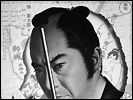 From James Bond to blaxploitation, virile men have long been a staple of popular cinema. Where 007 attempted to disprove the age old "No sex please, we're British", John Shaft (what's in a name) and company went a step further to become, as the poster said, "Hotter than Bond, cooler than Bullit." From James Bond to blaxploitation, virile men have long been a staple of popular cinema. Where 007 attempted to disprove the age old "No sex please, we're British", John Shaft (what's in a name) and company went a step further to become, as the poster said, "Hotter than Bond, cooler than Bullit."
Hanzo the Razor is Japan's superlative to the American comparative and the British regular. Fearless Edo-period police inspector Hanzo Itami (Katsu), nicknamed The Razor, has developed his own unique way of extracting information for his enquiries, using his rock hard and monstrous member to coax a succession of courtesans and ladies-in-waiting in spilling the beans.
Though often labelled sleazy and offensive, the Razor films are anything but simple exercises in salacious shock. The premise certainly sounds nasty enough, but as the saying goes, if it were all about the story, there wouldn't be any need to make the film.
In exaggerating the aspect of male virility, The Razor above all mocks it. The shadows and outlines of Hanzo's imposing member suggest an organ that would drive an Andalusian bull into a jealous rage. When the protagonist starts hammering it with a mallet and poking it into bails of rice to strengthen it, we know that what we're meant to do here is not recoil in disgust but laugh in amusement. Yes, this is a parody. Furthermore, in strict terms the film doesn't deal with rape. Hanzo's interrogation tactics have moved beyond torture, he has tried out all known methods of forced interrogations on himself and come to the conclusion that pleasure is a much more effective way of extracting information than pain. Like the British secret agents and Harlem private dicks that came before him, he's as much a lover as he is a fighter.
This certainly wasn't the first time director Kenji Misumi, so famous for going the extra mile in the violence department, showed a remarkably nuanced approach to something that in lesser hands could have descended into much baser fare. The pacifist streak in a film like Samaritan Zatoichi or the anti-bushido of the Baby Cart series already indicated that there is more to this filmmaker than meets the eye. Misumi has been justly applauded for his artisanal skills, but we're still far from giving the man his proper due.
Shintaro Katsu returned as Hanzo the following year in Razor 2: The Snare (Goyokiba: Kamisori Hanzo Jigokuzeme), written and directed by former Daiei provocateur Yasuzo Masumura, of Blind Beast fame. Masumura also scripted the third and final instalment, subtitled Who's Got the Gold (Goyokiba: Oni No Hanzo Yawahada Koban, 1974), which was helmed by his former assistant director Yoshio Inoue.
|
 |
Zero Woman: Red Handcuffs
Original Title: Zero-ka No Onna: Akai Wappa
Director: Yukio NODA
Cast: Miki SUGIMOTO, Tetsuro TANBA, Hideo MUROTA, Eiji GO, Yoko MIHARA
Running time: 85 mins.
Year: 1974
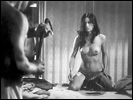 Although it springs from the same fertile imagination as Female Convict Scorpion and features a similar sexy/deadly heroine, Zero Woman: Red Handcuffs shoves the carefully maintained balance between sensationalism and feminism of the Meiko Kaji-starring series brusquely aside. With Toei Pinky Violence actress Sugimoto in the lead, clothing is shed as frequently as the plot will allow, which is often. And while she has not an ounce of Kaji's charisma, it must be said that Sugimoto is not at all lacking in charm. Although it springs from the same fertile imagination as Female Convict Scorpion and features a similar sexy/deadly heroine, Zero Woman: Red Handcuffs shoves the carefully maintained balance between sensationalism and feminism of the Meiko Kaji-starring series brusquely aside. With Toei Pinky Violence actress Sugimoto in the lead, clothing is shed as frequently as the plot will allow, which is often. And while she has not an ounce of Kaji's charisma, it must be said that Sugimoto is not at all lacking in charm.
The plot of Zero Woman was resurrected twenty years later for Luc Besson's La Femme Nikita: wildcat is saved from the gallows and forced to become an agent for the top secret Division Zero of the Tokyo police department. Armed with a gun, a badge and a pair of handcuffs that are all as nail polish-red as her skin-tight leather outfit (when she wears it), she is sent to investigate the kidnapping of a politician's daughter by a gang of psychopathic thugs. After infiltrating the gang, she stoically endures several rapes by its members to win their trust and then begins to imaginatively eradicate them one after another in her search for the missing girl.
Though some have referred to this film as feminist, it's more a case of having your cake and eating it too. This results in a generous and oh so satisfying helping of seriously stylish sleaze, with Sugimoto making up with her physical presence what she lacks in other departments (though in addition to her work for Toei she also appeared in several films for New Wave bastion Art Theater Guild). There are some attempts at injecting deeper meaning on the part of director Noda - note the references to the infiltration of American pop culture - but for the most part this is exploitation as exploitation was meant to be. And as such, it comes with the highest possible recommendation.
Like Female Convict Scorpion, Zero Woman was later revived as low-budget straight-to-video fodder. It speaks for itself that it cannot hold a candle to the original in any way. |